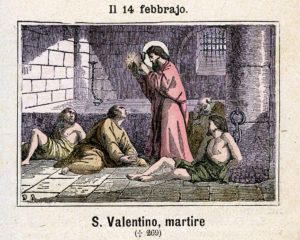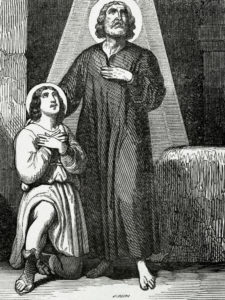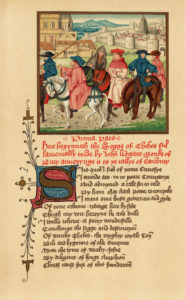-
Halloween
- The Story Behind Halloween – Lesson
- The Story Behind Halloween – Quiz
- Are You Too Old To Go Trick-Or-Treating? – Lesson
- Look out for the Blue Pumpkin – Lesson
- Is the White House Haunted? – Lesson
- Is the White House Haunted? – Quiz
- Mummies Discovered in Egypt – But That’s Nothing to Fear – Lesson
- Salem Witch Trials: When Being Called a Witch Meant Death – Lesson
- Halloween Around the World: It Isn’t Just Costumes and Candy – Lesson
- Halloween Around the World: It Isn’t Just Costumes and Candy – Quiz
-
Thanksgiving
- The Evolution of Thanksgiving – Lesson
- The Evolution of Thanksgiving – Quiz
- The Political Roots of Thanksgiving – Lesson
- The Political Roots of Thanksgiving – Quiz
- Turkey for Thanksgiving – But Why? – Lesson
- Turkey for Thanksgiving – But Why? – Quiz
- This Thanksgiving, Consider Helping the Less Fortunate – Lesson
-
Christmas
-
Easter
- Good Friday: Christ Carried Sin to the Grave – And Left It There – Lesson
- Good Friday: Christ Carried Sin to the Grave – And Left It There – Quiz
- Easter Traditions: From Rabbits to Egg Jarping – Lesson
- Easter Traditions: From Rabbits to Egg Jarping – Quiz
- Easter Monday and Egg Rolling at the White House – Lesson
- Easter Monday and Egg Rolling at the White House – Quiz
-
Federal Holidays and Observances
- New Year’s Day: Just as Political as Anything Else – Lesson
- This Presidents’ Day, Let’s Remember the Weird – Lesson
- Astounding Facts about US Presidents – Lesson
- Astounding Facts about US Presidents – Quiz
- Memorial Day: A Time of Honor and Respect – Lesson
- Memorial Day: A Time of Honor and Respect – Quiz
- From Decoration Day to Memorial Day – Lesson
- From Decoration Day to Memorial Day – Quiz
- Who Was the Poppy Lady, Moina Belle Michael? – Lesson
- Who Was the Poppy Lady, Moina Belle Michael? – Quiz
- The Origins of Flag Day – Lesson
- The Origins of Flag Day – Quiz
- America’s Flag – An Evolved Banner for an Ever-Changing Country – Lesson
- America’s Flag – An Evolved Banner for an Ever-Changing Country – Quiz
- Celebrating the 4th of July – Lesson
- Celebrating the 4th of July – Quiz
- Who Should We Thank for Labor Day? – Lesson
- Who Should We Thank for Labor Day? – Quiz
- Constitution and Citizenship Day – Lesson
- Constitution Day – The First Day of Constitution Week – Lesson
- Constitution Day – The First Day of Constitution Week – Quiz
- The Political Origins of Columbus Day – Lesson
- The Political Origins of Columbus Day – Quiz
- Columbus Day or Indigenous Peoples’ Day? – Lesson
- Columbus Day or Indigenous Peoples’ Day? – Quiz
- Veterans Day: A Day to Honor Those Who Served – Lesson
- Veterans Day: A Day to Honor Those Who Served – Quiz
- Marion Robert Goff: A Soldier’s Tale on D-Day – Lesson
- Marion Robert Goff: A Soldier’s Tale on D-Day – Quiz
- Independence Day: The History You Might Not Know – Lesson
- Independence Day: The History You Might Not Know – Quiz
-
Other Traditions
- Valentine’s Day Love Poems – Lesson
- Love Poems for Valentine’s Day – Lesson
- Who Was St. Valentine? – Lesson
- Who Was St. Valentine? – Quiz
- No Love for Valentine’s Day in the East – Lesson
- No Love for Valentine’s Day in the East – Quiz
- Beware the Ides of March – But Why? – Lesson
- Beware the Ides of March – But Why? – Quiz
- St. Patrick’s Day: A Celebration of the Irish – Lesson
- St. Patrick’s Day: A Celebration of the Irish – Quiz
- May Day: Dancing ‘Round the Maypole – Lesson
- May Day: Dancing ‘Round the Maypole – Quiz
- Cinco de Mayo: Celebrating Mexico’s Victory in Puebla – Lesson
- Cinco de Mayo: Celebrating Mexico’s Victory in Puebla – Quiz
- Mother’s Day: The Anti-War Effort Turned Holiday – Lesson
- Mother’s Day: The Anti-War Effort Turned Holiday – Quiz
- Father’s Day: More Than Just a Day for Ties – Lesson
- Father’s Day: More Than Just a Day for Ties – Quiz
- Presidential Fathers: Responsible for Their Kids and the Country – Lesson
- Presidential Fathers: Responsible for Their Kids and the Country – Quiz
- Proof of the Hanukkah Story Found? – Lesson
- Proof of the Hanukkah Story Found? – Quiz
- Roses Are Red, Violets Are Blue – April Celebrates Poetry, Too – Lesson
- Roses Are Red, Violets Are Blue – April Celebrates Poetry, Too – Quiz
Who Was St. Valentine? – Lesson

(Photo by Artur Widak/NurPhoto via Getty Images)
Who is really responsible for the beginning of Valentine’s Day?
It’s Valentine’s Day, a holiday to celebrate romance and love. It’s a time to give out chocolates and poetic cards to loved ones and those you might have a crush on. But who was St. Valentine and why is this day associated with him?
You might be surprised to find out that no one knows who the real St. Valentine really was. Historians agree (and disagree) that there are two likely suspects, but these men are more martyrs than an inspiration for love and poetry. In fact, some argue that the two men might be one in the same. Let’s take a look:

(Photo by Fototeca Gilardi/Getty Images).
In one account from the 1400s, Valentine is depicted as a temple priest in ancient Rome. He defied the order of Emperor Claudius II, also known as Claudius the Cruel, and helped young couples get married. As the story goes, Claudius was struggling to find enough soldiers to serve the Roman empire, and he blamed the family attachments of young men. The emperor banned marriages, as he thought wives and families made young men reluctant to enter a military life. Valentine thought the order was unjust, and held weddings in secret. The priest’s actions were discovered, and he was arrested and sentenced to death in around the year 270. It’s said that he met a guard’s daughter while in jail and before his execution he left her a note signed “From your Valentine.”
Another story is virtually the same, except it says that Valentine was the Bishop of Terni, a city in Italy. Both versions of the tale say the man was buried on February 14, in a Christian cemetery on the Via Flaminia, an ancient road that led out of Rome.

St Valentine of Terni (Photo by: PHAS/Universal Images Group via Getty Images)
Both St. Valentine of Rome and St. Valentine of Terni are recognized by the Roman Catholic Church, but not much is known about either one of them. In fact, Pope Gelasius I, in A.D. 496, referred to the saints’ actions as “being known only to God.” Despite the mystery, Gelasius established the Feast of Saint Valentine, to be celebrated on February 14. However, the purpose of the holiday was not to celebrate love or romance, but to honor the sacrifice of the Christian martyrs.
To add to the confusion, St. Valentine is not the only saint with the same name. There are about a dozen St. Valentines, including a pope. A St. Valentine of Genoa also exists, and he was celebrated in early May. The most recent to receive the saint status is St. Valentine Berrio-Ochoa, a Spaniard who went to Vietnam and served as bishop until he was beheaded in 1861. Pope John Paul II canonized him in 1988.
So, what does being St. Valentine mean? This person is considered the patron saint of beekeepers and epilepsy. People also call on this saint to watch over the lives of couples as well as marriages, which adds to the idea behind the holiday. The saint is also called upon to intervene when there are plagues, when someone has fainted, or for safe traveling.

Canterbury pilgrims portrait – illuminated manuscript of Geoffrey Chaucer (Photo by Culture Club/Getty Images)
While St. Valentine is a patron of marriage, he has a lot of other causes, too. So how did the date become so connected to the idea of love and romance? Some historians believe the credit should go to the English poet Geoffrey Chaucer. In fact, some say he may well have “invented” Valentine’s Day.
Chaucer may have created the holiday of love with his poem, “Assemble of Foules [Assembly of Fowls],” or “Parlement of Briddes [Parliament of Birds],” written around 1375.
The poem describes an assembly of birds who are choosing their mates on Valentine’s Day. Chaucer wrote: “For this was sent on Seynt Valentyne’s day/ Whan every foul cometh ther to choose his mate.”
It’s not clear which Valentine the poet meant to honor, or on which date he thought the celebration should occur. However, it was popular during Chaucer’s day to celebrate chivalry and tragic love stories between noble ladies and knights. It seems he inspired a trend of stories and songs depicting Valentine’s Day as a day for love.